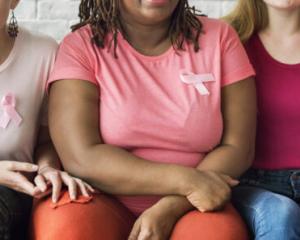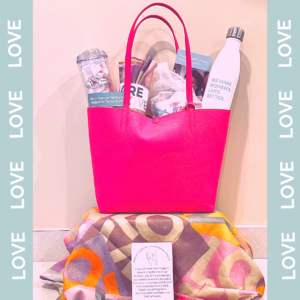Walk-In Now: 6244A Little River Turnpike, Alexandria, VA 22312 Ph: 703-564-0000
Proudly Part of Privia Health

October is Breast Cancer Awareness Month. Have You Scheduled Your Mammogram?
We all think it can’t happen to us. We’re too young, too healthy, too busy. But why take a chance? Discovering breast cancer early, before it has spread, is the single best way to prevent a breast cancer-related death. One of the best ways to detect early cancer is by getting regular mammograms. This October, celebrate Breast Cancer Awareness Month in the best way possible — get a mammogram.
Breast Cancer Risk Factors
The two main risk factors for breast cancer are being a woman and getting older and some other risk factors, such as family history, can’t be changed. But, studies have shown lifestyle changes can decrease breast cancer risk—even for women who are at high risk for developing breast cancer in their lifetime. What can you do?
- Exercise. Regular exercise lowers breast cancer risk by about 10-20%. Try to get at least 150 minutes of moderate aerobic activity or 75 minutes of vigorous aerobic activity weekly. And, add in strength training two times a week as well.
- Control your weight, especially after menopause.
- Don’t smoke. Recent studies suggest a link between smoking and breast cancer risk, especially in premenopausal women.
- Limit alcohol. The more alcohol you drink, the greater your risk of developing breast cancer. Limit yourself to less than one drink a day as even small amounts increase risk.
- Limit hormone therapy. If you’re struggling with menopause symptoms, talk to your doctor about alternatives to combination hormone therapy.
- Breast-feed. There’s emerging evidence that breastfeeding may play a role in breast cancer prevention. The longer you can do it, the better.
- Eat healthily. Studies indicate that women who eat a diet that focuses on mostly-plant based foods (fruits, vegetables, whole grains, legumes and nuts) with some healthy fats (olive oil, fish) might have a reduced risk of breast cancer.
- Be vigilant.You know your body better than anyone. If you notice a lump, bump, skin change, discharge, or just don’t feel right.
When should I get my first mammogram?
In general, we recommend starting annual 3D screening mammograms at age 40. There are certain circumstances or family history that may warrant earlier or additional screening. One-on-one with your health care provider is the best way to determine what you need and when.
Screening mammograms use low-dose x-ray to create an image of the breast tissue. Mammograms can help detect lumps that are often too small to be felt. Screening mammograms are for women who:
- have never had breast cancer
- do not have symptoms of breast problems (lumps, breast pain, discharge)
- have not had a recent abnormal mammogram
What should I expect?
Preparing for your mammogram:
- If you still have regular periods, try to schedule your mammogram for immediately after your menstrual cycle. Breast tenderness typically is mild right after your period.
- On the day of your mammogram, avoid perfumes, powders, deodorants, lotions, or any other substance that you may put under your arm or on your breasts. They contain ingredients that can interfere with the clarity of the image.
- It’s best to wear a two-piece outfit to your mammogram appointment. Then, you will only need to remove your top at the time of the exam.
- If you have had a prior mammogram at a different practice or hospital, request that the images be sent to Virginia Women’s Center. This will help the radiologist compare studies over time.
What to expect at your mammogram:
- Your appointment will last about 15-20 minutes, but each breast compression only lasts 20 to 30 seconds.
- You will be given a gown and asked to remove your clothes from the waist up.
- You will stand in front of the x-ray machine and the mammography technologist will help place your breast on a small platform. A clear plastic plate will press down on the breast for several seconds. Most women find the pressure mildly uncomfortable and while some women may find it painful. The compression is necessary as it allows the breast tissue to spread and flatten. This ensures a clear view of your breast and reduces the amount of radiation needed to make an image.
- The technologist will take several pictures of the breast.
- A radiologist will review the images of your breast thoroughly to see if there are any abnormalities or changes from prior images.
Are Breast Self-Exams Important?
Very! Regularly examining your breasts on your own in combination with annual screening mammography and regular physical exams by your provider can increase the odds of early detection. Breast self-exams allow you to know what your “normal” is and that it’s not necessarily unusual for lumps or tenderness to occur at certain times of the month, but then disappear. If you are unsure how to perform a self-exam, ask your provider at your next appointment, or follow these five easy steps.Forty percent of diagnosed breast cancers are detected by women who feel a lump, so take a few minutes throughout the month to get to know your breasts and your “normal.”
Where Can I Get a Mammogram?
We have four locations around RVA. Check our website to find a location near you. VWC offers a full array of breast health care including screening and diagnostic mammography services. Our screening mammograms use 3D, or tomosynthesis, technology, which detects 40% more breast cancers while reducing false positives by almost 40%. And if we see anything suspicious on your screening mammogram, we’ll schedule a diagnostic evaluation right away to get more information and put your mind at ease.
If you get your annual screening mammogram elsewhere, make sure they use 3D technology. Unfortunately, some area mammography centers offer 2D imaging solely or use it intermittently along with 3D imaging without patients’ knowledge.
VWC’s Dr. Kimberly Galgono thankfully didn’t put off her mammogram and neither should you.
If you haven’t already scheduled your mammogram for the year, please give yourself peace of mind and schedule it today. If you prefer to speak with a VWC patient coordinator, call 804.288.4084, or you can go online and pick a date and time that works for you with just a few clicks here. Oh, and if you get your mammogram in October, you’ll automatically be entered to win a Ralph Lauren Tote filled with love!
We hope to “see” you soon.

